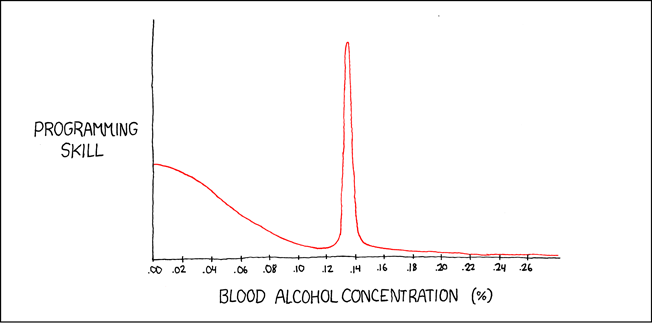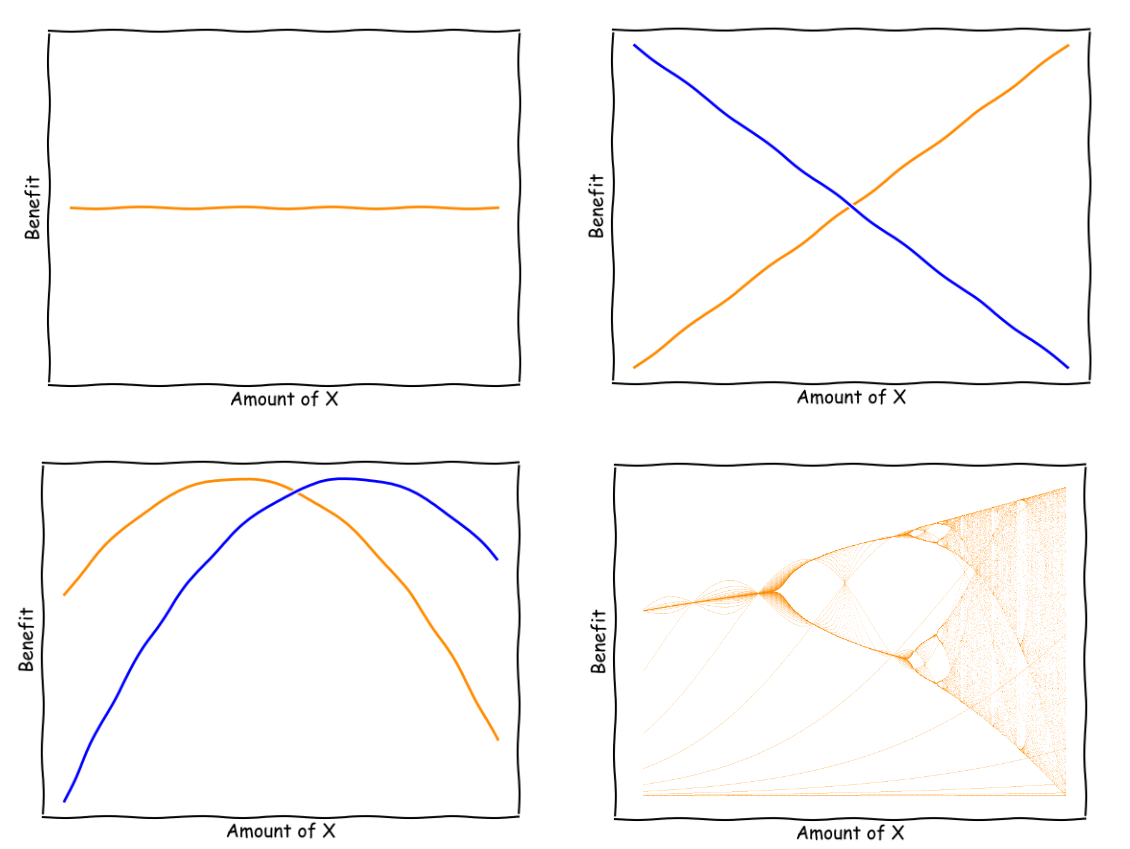The four modes of contemporary thinking
As a next step towards the understanding of contemporary human beings, I myself must venture into the dreaded business of simplification. I'll make this as simple as possible, but not simpler.

Say a group is discussing society. Let X be a quantitative variable relevant for society. Ask the group what should be done about the value of X.
If the group is large enough, answers will predominantly fall into four specific categories:
- everything is bound to stay the same, no matter what they do to X
- we need more X / we need less X
- we need an optimal amount of X, which is...
- we need Y to rescue Z from W’s oppression and K’s inertia, because we know Js are stronger together
X could be the length of paid holidays or paternity leave, minimum wage, the VAT, the percentage of the state budget allocated to the public health system, among other social variables.
The four categories of answers above define what I call the four modes of contemporary thinking, pictured below:
- Zeroth order thinking: indifference (mode 0)
- First order thinking: linearity (mode 1)
- Second order thinking: optimization (mode 2)
- Out of order thinking: chaos (mode C)

The breakdown of thinkers by thinking mode depends both on the audience and the variable under discussion. Unfortunately, I cannot help but conclude that second order thinkers are a minority for most topics.
This sad state of affairs becomes even sadder if seen through the lens of Reductio ad absurdum. For the sake of the exercise, let's imagine a discussion on the amount of salt that should added to vegetable soup. We would then find the following groups of thinkers:
- those who claim that vegetable soup always tastes the same
- those who are constantly demanding salt should be reduced, since they take into account the medical literature on the adverse effects of salt for human health
- those who are constantly demanding salt should be increased, out of respect for traditional cooking, consumer responsibility, and the more recent studies highlighting the virtues of salt
- a group who would discuss the matter in the following terms: “the optimal amount of salt is Y grams per liter” / “No no, the optimal amount Y/2 grams per liter” / ...
- and finally, a group who would stand up for pepper (out of purely gustatory reasons), and saffron (because 21st century soup should be multicultural), while fiercely opposing Knorr Stock Cubes, a poisonous industrial seasoning, they say...
If answers for the amount of salt in vegetable soup were to follow the same pattern as the ones for social issues, one could say that the average cook has a more scientific approach than the average citizen.
Thus, the major drama of contemporary societies is easily summarized: mode 0 thinking citizens – a product of long-lasting ignorance-inducing oppressive regimes – have not been replaced by mode 2 thinkers. Democracy, education, information, and freedom have left many citizens exactly where they were before, while upgrading others to the less than ambitious mode 1.
Mode 1 thinking is a particular case of simplism, a major source of polarization, and a threat to social cohesion. The desired and well-deserved freedom achieved in many countries has not been backed by appropriate education.
Schools should take the matter into their own hands. Students should learn:
- that every intervention in society must have a predefined goal
- that some interventions on a measurable quantity X generate multiple effects with a positive or negative impact on the predefined goal; the overall net effect needs to be understood
- that most measurable interventions have an optimal amount which minimizes the distance to the predefined goal
Here's one of many optimization problems too often discussed linearly: what is the optimal amount for the minimum wage? The answer depends on our predefined goal. In fact, the amount that maximizes employment is not the same as the one that maximizes the GDP. And a different amount would be found if the goal was to maximize a specific welfare function. When maximizing employment, we need to consider that increasing the minimum wage will disincentivize job creation due to higher costs of work for some organizations. On the other hand, it provides additional purchasing power to those who are paid the minimum wage, increasing consumption of goods and services and, therefore, adding pressure to the creation and maintenance of new jobs. The net effect depends on how many people are paid the minimum wage and how high we propose this increase to be.
This is the type of discussion that changes the game entirely. By recognizing the existence of optimal amounts, we are forced to discuss mathematical models and to provide clear statements of the social goals we are aiming for. This is what every simplist wants to avoid. And that's why we should be doing it.